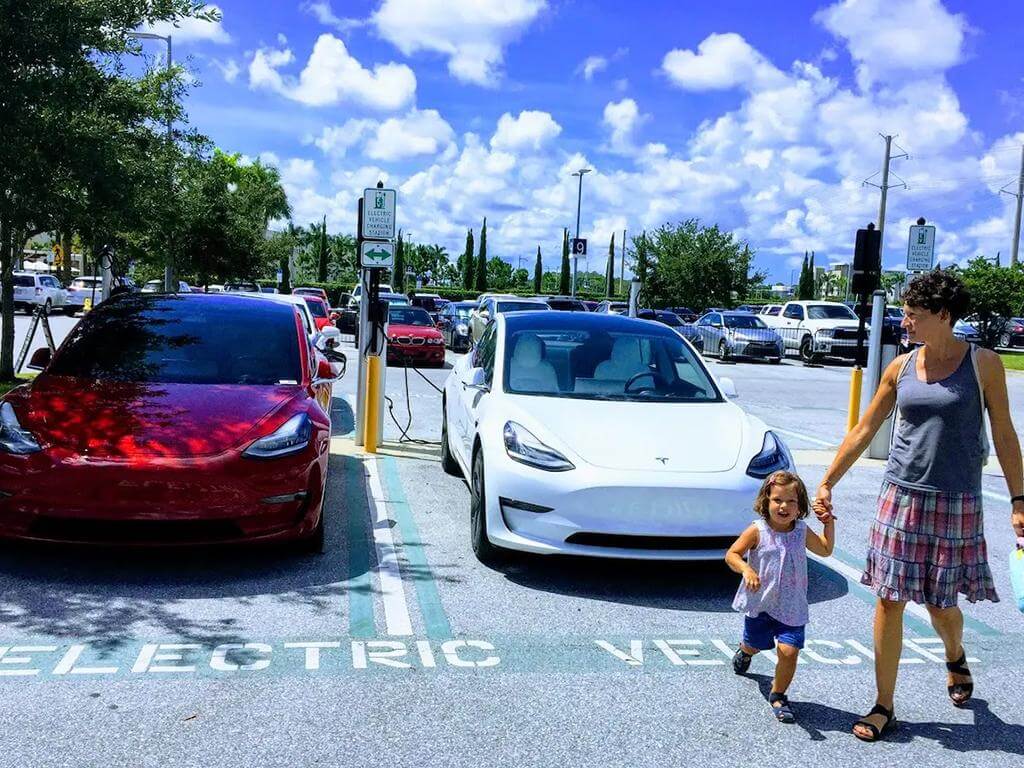How does (and will) the increased use of EVs impact the power grid?
California recently passed legislation that will ban the sale of gas-powered cars by 2035. This year, Tesla already became the second best selling auto brand in the state, and the Model Y and Model 3 are the state’s two top selling models. Without a doubt, California’s future will involve greater and greater electricity demand from personal transportation. How it will handle that growing electricity demand is an important question. Furthermore, California has long been a tech leader and is proving to be one again in the transition to EVs. Other states will follow, and some countries already have similar or more aggressive legislation. All of these markets will be dealing with the switch from gas-powered cars to electricity-powered cars.
I just did a Google search for "How does the increased use of EVs impact the power grid?" I was curious what that would turn up and if it would include high-quality research and analysis that would help me to better understand the details of this matter. Unsurprisingly, the results showed headlines with vastly different perspectives on what more EVs will mean for the grid. Each piece had at least part of the story, but none of them pulled everything together. This is a challenging task, since there are many aspects of how growing EV adoption will impact the power grid.
Following GM's announcement in early 2021 that it planned to go fully electric by 2035, the New York Times published an article raising concern about what that meant for the power grid. The short summary: We're going to need more charging stations. We're going to need more power plants. Those power plants need to be clean, renewable energy power plants. We're going to need more substations. We need "utilities to get more creative about juggling exactly when electric vehicles charge their batteries, so that they don’t all power up at the exact same time and overload electrical equipment or require the construction of costly new power plants."
That's a good simple summary, but it just scratches the surface. Most of those points are straightforward and self-explanatory. The real fun is in the details of that last point. How will 5% of vehicles being electric impact the grid, and how will utilities (and EV owners) need to respond? How will 20%, 30%, or 50% of vehicles being electric impact the grid, and how should we respond then? How will we respond?
Both big benefits and big challenges come from the same fundamental factor: EVs have big batteries. If most people get home from work and want to plug in their car for convenient charging, that puts a lot of electricity demand on the grid at the same time, and this is already the time of peak electricity demand in most places. The price of electricity at times of peak demand is higher because going significantly over a base level of demand can require turning on additional power plants that cost a lot to run. Also, simple economics tells us that as the options for electricity supply diminish, the remaining suppliers can charge a lot more for the kWh they provide. Further, power plants that run infrequently need to recoup their costs and try to earn profits in limited windows of need — so they are going to squeeze out every dollar they can. The bottom line is that increasing electricity demand right at the time of existing peak demand means higher electricity costs for consumers unless more power capacity is added for those times, and adding power capacity takes quite a lot of time and money.
The good thing is that those big batteries can be filled up at any time the car is parked and plugged in, and cars are actually parked approximately 95% of the time. So, whether at home or at work, as long as the car can be plugged in, smart charging is available, and the utility grid is set up to reward that. Much of a car's charging can be done at times when there's considerably more supply than demand rather than at those aforementioned times of soaring demand and tight supply. In fact, with gigawatt-hours of EV batteries plugged in and offering somewhat flexible charging, a utility could balance out supply and demand throughout the day more easily. Going a step further, if many EV drivers give the utility permission to pull some electricity from their car batteries (via vehicle-to-grid technology), then utilities can even use those big EV batteries (which provide massive energy storage capacity on a network scale) in order to avoid the need for expensive peak power plants.


Then there's the matter of fast charging. Instead of 3 kW or 7 kW home charging, when going on a road trip, an EV may recharge at a max rate of 150 kW, 250 kW, 350 kW, or even now 480 kW. That's a large amount of power to pull at one time for just one car — let alone 10, 20, or 50 in one location — and that can put a huge amount of stress on local power transmission, substations, and, again, power plants. “Most of the transmission grid we have across the country today was built in the 1960s and 70s, meaning that the needs of today, including powering EVs, were not envisioned then,” Simon Whitelocke, president of transmission company ITC Michigan, told POWER magazine in 2020. “A study by WIRES and The Brattle Group indicates the investment in transmission in the U.S. must rise [on average] from $15 billion annually today to as much as $40 billion per year between 2031 and 2050 [high case] to meet this electrification challenge. What we’re also taking away from this study is the need for appropriate transmission planning at the regional planning level — and the time to start planning for future scenarios is now.” Furthermore, those forecasts are most certainly based on EV adoption forecasts that are well below what the market will deliver. Considering all of these matters, one thing that is clear is that, aside from grid upgrades, many charging stations will need to incorporate onsite energy storage in order to even out supply and demand.
As noted earlier in this blog, one of the core ways electric vehicles will impact the grid is they will require a lot more power generation. That's a simple matter on the surface, but I'll close with one of my favorite serendipitous synergies in the new cleantech era. One of the challenges that has arisen in areas that have adopted a lot of solar power is what is commonly called the "duck curve." So much solar energy is generated in the middle of the day on some grids that supply far exceeds demand, driving down the price of wholesale electricity and thus making it hard for power generators to get the revenue and profits they need in order to survive while simultaneously presenting some grid-balancing challenges for utilities. Throw in solar net metering (in which small-scale solar generators get paid a certain amount for electricity they send into the grid, even at times when no additional electricity is wanted) and the situation can get especially messy. This is where electric cars can come in and really help out again. With smart, flexible charging, they can soak up all that solar generation in the middle of the day when solar energy is pouring in. Fueling electric cars with solar energy at home, at work, and on the go can help to relieve pressure on the grid. EV charging can help with solar integration, and solar energy growth can help serve the growing electricity demand from EVs. With the proper pricing at times of high solar power generation, it could potentially even enable drivers to pay nothing for fuel — a good incentive for clean electric driving.
Up till now, utilities that have offered special EV charging plans or time-of-use charging plans have typically incentivized charging in the middle of the night — when there's much more electricity supply than demand. However, as more solar power comes onto the grid, they can encourage EV drivers to charge more in those sunny periods of the day.
Without a doubt, the big benefits of EVs for the power grid comes from smart, flexible charging and more innovative pricing systems — and perhaps even vehicle-to-grid technology. The big but simple challenge is adding enough extra power generation capacity and transmission infrastructure. The only real "nightmare" scenario would be if we relied on "dumb" charging technology and incentive structures that didn't guide charging to the right times of day and didn't use the enormous potential of EV battery packs to actually help stabilize the grid and bring down costs.


